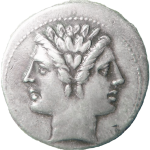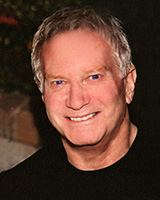(See my “Continuing Series” page for a listing of all posts about using Syd Field’s paradigm to write fiction.)
As mentioned in my first post of this series, Syd Field calls his structure “the paradigm”:
The paradigm is a dramatic structure. It is a tool, a guide, a map through the screenwriting process. As defined in Screenplay, a paradigm is a “model, an example, a conceptual scheme.” … A screenplay is an open system.
That last bit is important. A screenplay—and a novel, and a short story—is an open system. Compare this to an observation made by Bjarne Stroustrup, creator of the C++ programming language:
…software development is an iterative and incremental process. Each stage of the process is revisited repeatedly during the development, and each visit refines the end product of that stage. In general, the process has no beginning and no end.
(Emphasis mine.) Although Stroustrup is describing how software is written, I believe his observation applies to writing fiction too, and most creative endeavors.
Think of a story you’re working on right now. Do you really know where your inspiration for it started? Can you enumerate every influence leading up to it? Now think of your last completed story. Are you really finished with it? I’ve discovered recurring themes in my own work that make me wonder if I’m still “writing” older work.
Writing is an iterative and incremental process of inspiration, evaluation, and revision. Each iteration shapes and smooths and revises. Nothing in a story is sacred. Everything in it deserves questioning and challenging.
Proportions
Field’s paradigm asks you to think of a story as three interconnected acts. Each act is unit of drama. It may be a scene or a series of scenes, but in fiction, those scenes are not necessarily “in the moment” of the narration. (For example, Heart of Darkness is entirely narrated by Marlow in England, but the acts of the story are the events along the river in Africa.)
The three acts are not vacuum-sealed. Events in Act One have ramifications that carry into Act Two and even Act Three. Questions posed on the first page may not be answered until the last.
At its simplest, the three-act structure goes back to Aristotle’s Poetics:
Tragedy is an imitation of an action that is a whole and complete in itself…a thing is a whole if it has a beginning, a middle, and an end.
In some ways, that’s all the three acts are: the beginning, middle, and end of your story.
Each act is not the same length. Remember, in movies and theater, time is everything. (In both genres, one manuscript page is considered to be approximately one minute of stage or projection time.) Most films are 90 to 120 minutes long. Theater tends to run closer to three hours, but there’s been a recent trend for ten-minute plays.
As far as page count, fiction is all over the map. What’s more, fiction writers don’t tend to obsess over how long it takes for a reader to read the story. For my interpretation of Field’s paradigm and applying it to fiction, I don’t worry about the length of each act in terms of page count. What’s important is their proportions:
- Act 1: 25%
- Act 2: 50%
- Act 2: 25%
So the middle section of the story is roughly twice as long as the opening and concluding acts—roughly.
If you think about it, that’s not terribly revolutionary news to a fiction writer. We’re taught to watch out for long openings. Exposition, introduction, summary, prologue, and/or excess scene-setting merely serve to delay the start of the narrative. Likewise, we’re told to watch out for ending exposition, long-winded conclusions, and so forth. We’re supposed to be eagle-eyed for when the story “really” starts (in medias res is the phrase usually mentioned here) and when the story “really” ends (think of Gordon Lish cutting the final pages of a Raymond Carver story).
In a nutshell, that’s what Syd Field encapsulates with his observation about act lengths. Trim the opening down, wrap up the ending as concisely as possible, and save the meat of the story for the middle. I would push harder on those numbers—20% / 60% / 20%—but there’s more to Act One and Act Three than the introduction and conclusion of a story. (More on that later.)
Three—no, four—acts
One problem with Field’s original three-act structure in Screenplay was the long haul from the end of Act One to the start of Act Three. Act Two is fifty percent of the story, 60 pages of screenplay manuscript. Since Field’s paradigm was intended to act as a guide or a map, how could he advise how to write a screenplay when half of his map was blank white nothing?
In his later Screenwriter’s Workbook, Field explains a discovery he made after Screenplay‘s publication. In many movies he found there’s a midpoint event that cleaves the second act into two smaller units of drama. This gives the screenwriter a target to shoot for when starting Act Two:
Knowing the midpoint is a tool; with it you have a way of focusing your story line into a specific line of action. You have a direction, a line of development.
(Playwriting defines “action” as a character’s desires and motivations, not shooting guns and car chases. Although Field doesn’t define the word, I believe he uses “action” to mean the results of a character attempting to fulfill those wants—in other words, we see the character trying to get what they want and experiencing the consequences. Aristotle said story “is not an imitation of men but of actions and life.” His use of the term could apply to both definitions.)
 Between reading Field’s description of the midpoint, thinking of some examples in film and fiction, and my own experience, I see the midpoint as a Janus point in the story, a moment of looking backward and forward. Even if the storyline has wandered a bit (due to character development or a digression—any reason, really), the midpoint is a stitch connecting the beginning to the end.
Between reading Field’s description of the midpoint, thinking of some examples in film and fiction, and my own experience, I see the midpoint as a Janus point in the story, a moment of looking backward and forward. Even if the storyline has wandered a bit (due to character development or a digression—any reason, really), the midpoint is a stitch connecting the beginning to the end.
With his discovery of the midpoint, Field’s three-act structure looks more like a four-act structure, but the basics are the same. I’ve labeled them with Field’s names, adding my own label for 2A:
- Act 1: Setup (25%)
- Act 2A: Complication (25%)
- Act 2B: Confrontation (25%)
- Act 3: Resolution (25%)
The labels are to offer the thrust of each act’s purpose. There’s no requirement that every sentence in Setup be setting up your story, or that every scene in Confrontation be confrontational. It’s just a general idea of the direction of that act.
The percentages may look daunting or restrictive, but understand that they’re to indicate rough proportions and not page counts. If your novel’s Act One is only ten percent of the pages, that may be just fine, or even great. But if your Act One is fifty percent of the pages, Field’s paradigm suggests you need to rethink your Setup. I suspect your readers would too.
